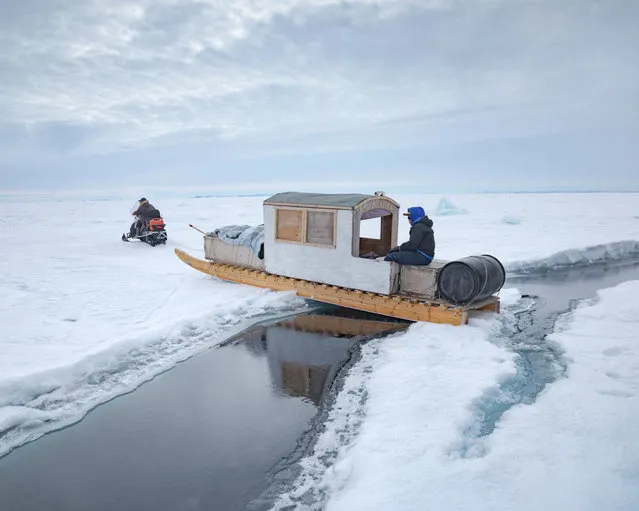
“Sea Ice Stories”. Inuit subsistence hunting traditions in the north of Baffin Island, Canada. In a time of rapid climate and cultural change, family camping trips to ancestral hunting grounds are an important way for the young people of Nunavut to remain connected with the land and their culture, and to learn skills and values from their elders that will prepare them to be leaders and providers in their communities. (Photo by Acacia Johnson/Visa pour l'Image)
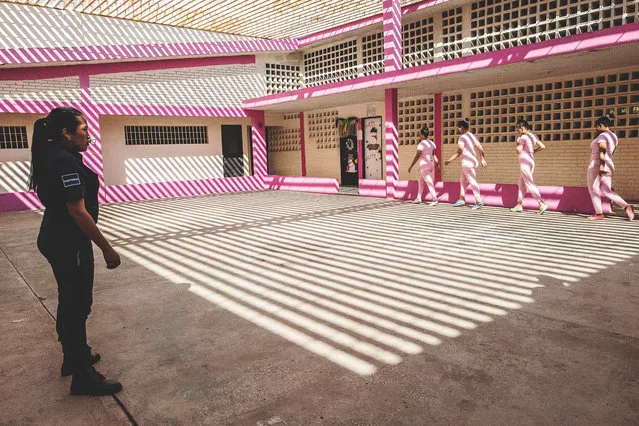
“Dias Eternos”. A warm-up session before playing volleyball. The programme for the female detainees includes sport, motivational and disciplinary workshops, art and crafts. The prison sentence is intended for reform and to avoid recidivism. Credits for good behaviour can lead to early release. State prison, Maracaibo, Venezuela, December 2018. (Photo by Ana Maria Arevalo Gosen/Visa pour l'Image)
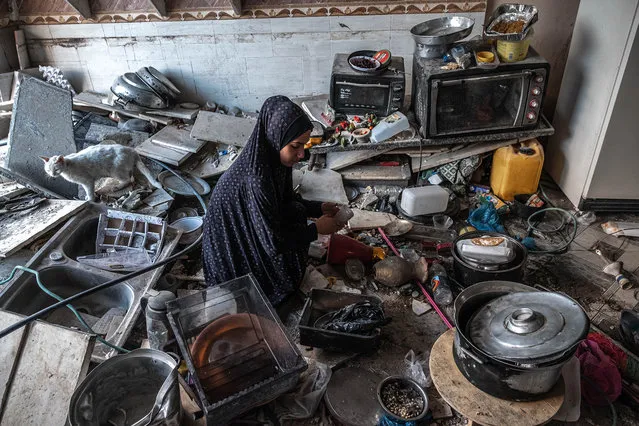
“A Life Under Siege”. “The 2021 Gaza War was the was the first war I covered for so long; it was 11 days non-stop. I realised just how important the camera is, how it can convey details of the city where 2 million people have been living in an open-air prison since the blockade of Gaza was imposed in 2006”. (Photo by Fatima Shbair/Visa pour l'Image)
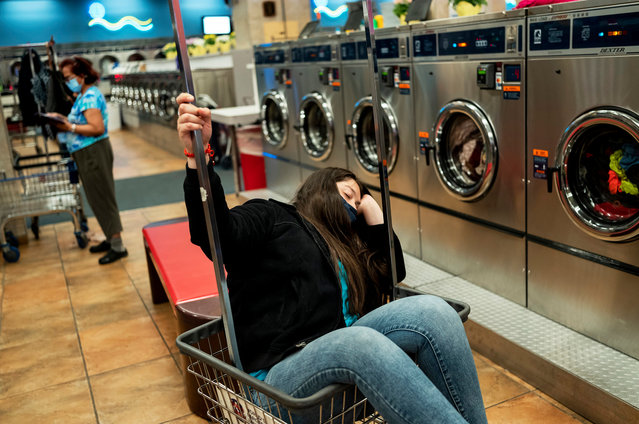
“American Cycles”. The world’s largest laundromat is hard to miss with hundreds of washers and dryers spread over 1,300 square metres. The laundromat is open 24 hours a day, 7 days a week, and runs on solar energy with rooftop panels as wash cycles spin endlessly in this peaceful haven between work and home in a working-class, largely Hispanic suburb of Chicago. (Photo by Darcy Padilla/Agence VU French Ministry of Culture production grant for female photojournalists/Visa pour l'Image)
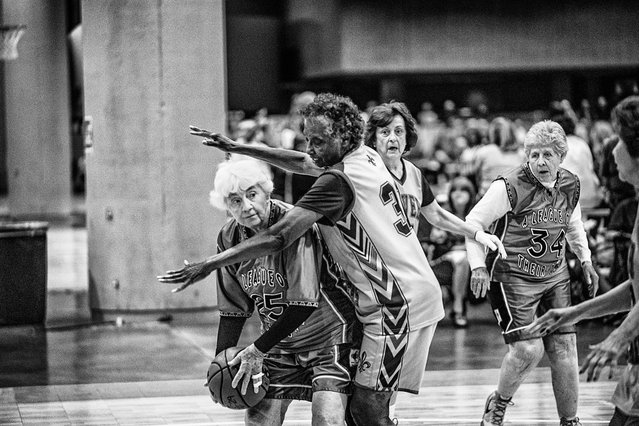
“Who are you calling old”? “In the United States, I discovered sports competitions for seniors, both men and women, with determined amateurs, some who started competing after they retired, and former athletes too old to enter major events. From the age of 55 to 90+, they all have the same spirit of solidarity and the same ambition to stand up to the march of time”. National Senior Games basketball competition: The Silver Slammers vs A League of Their Own. Birmingham, Alabama, June 2017.At the Maison de la catalanité 28 August to 26 September. (Photo by David Burnett/Contact Press Images/Visa pour l'Image)
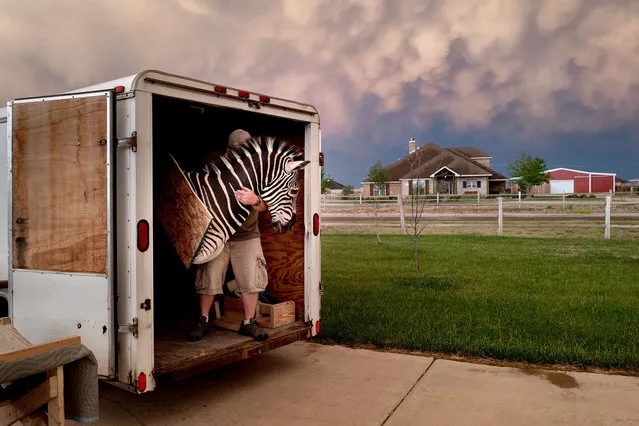
“Sugar Moon”. Wenger has spent years documenting trophy hunting and its role in wildlife conservation in Africa, and wanted to embark on a new chapter devoted to the exotic animal business in the US. Her work on hunter Erik Grimland aims to understand the complex world where tradition, consumerism and the male of the species coincide. Grimland, returning from a family safari in South Africa, unloads trophies at his suburban home, Texas, May 2018. (Photo by Mélanie Wenger/Visa pour l'Image)
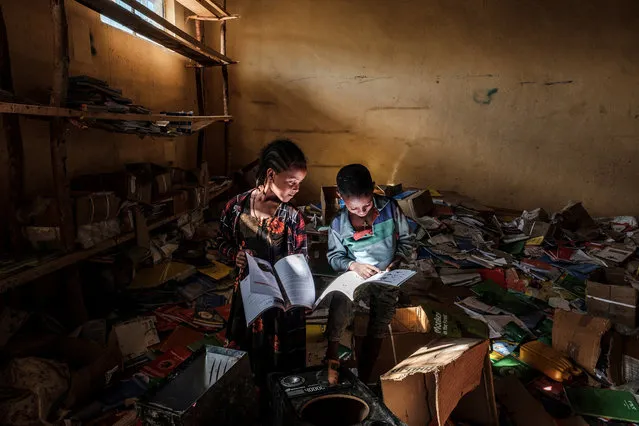
“Tigray: Ethiopia’s Cascade into Chaos”. Soteras’s images showed the world what was happening in Tigray, contradicting the government’s argument that the conflict would be relatively minor. Evidence of civilian suffering was everywhere.In the library of a primary school, damaged during fighting in the Tigray region. According to locals, Tigrayan troops moved into the school after it had been closed because of the pandemic, and months before the conflict began. Bisober, Ethiopia, December 2020. (Photo by Eduardo Soteras/Visa pour l'Image)
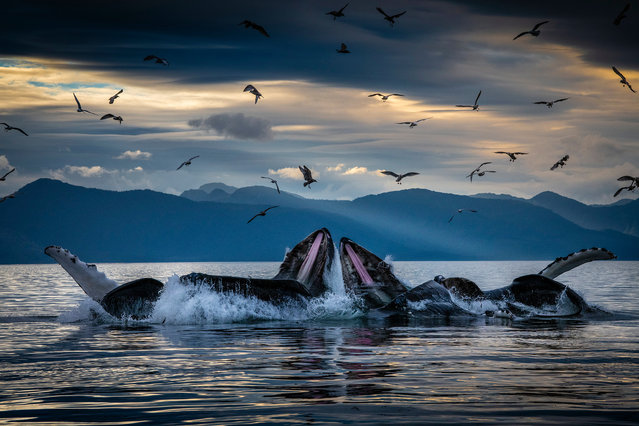
“Secrets of the Whales”. Skerry’s photographs celebrate the lives and culture of whales, illuminating recent research and their diverse behaviours. His latest work focuses on four key species: sperm whales, humpbacks, orca and beluga whales. Humpback whales bubble-net feeding off the coast of Alaska. They work cooperatively to feed on herring by blowing a perfect ring of bubbles underwater to form a net encircling the fish. The whales then swim up through the centre of the bubble net with their mouths open. (Photo by Brian Skerry/National Geographic Photo/Visa pour l'Image)
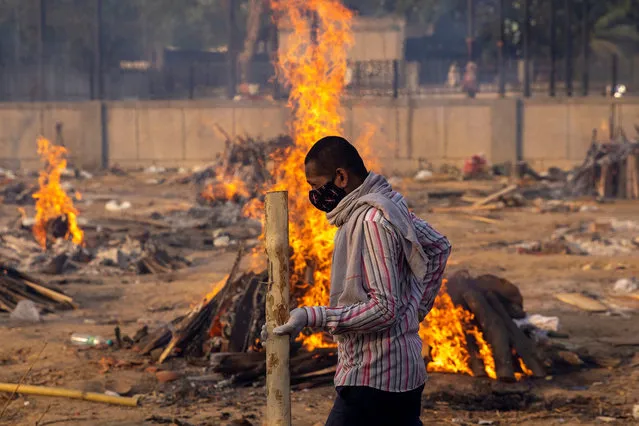
“Documenting India’s Greatest Healthcare Crisis”. For the late Reuters photographer Danish Siddiqui, covering India’s second wave of the coronavirus pandemic in New Delhi was a daily circuit of crematoriums, cemeteries and hospitals, capturing the struggles of a nation of 1.4 billion people. A man walks past burning funeral pyres of people who died due to Covid-19 at a crematorium in New Delhi, April, 2021. (Photo by Danish Siddiqui/Visa pour l'Image)
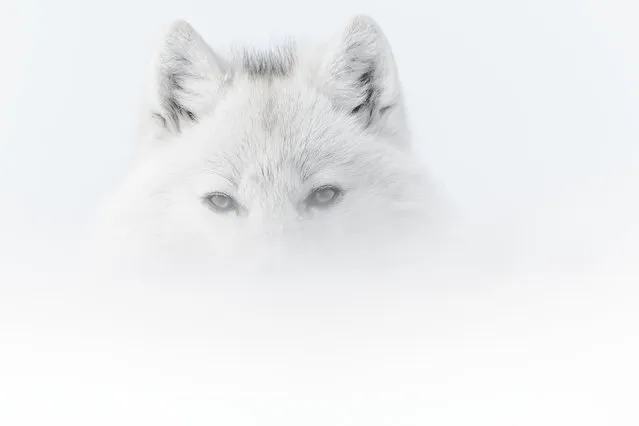
“Retrospective”. Munier’s photography invites visitors to embark on a poetic journey through nature. A range of wildlife from the smallest ant and a modest sparrow to large deer and a polar bear, and this arctic wolf in the fog, on Ellesmere Island, Nunavut, Canada. (Photo by Vincent Munier/Visa pour l'Image)
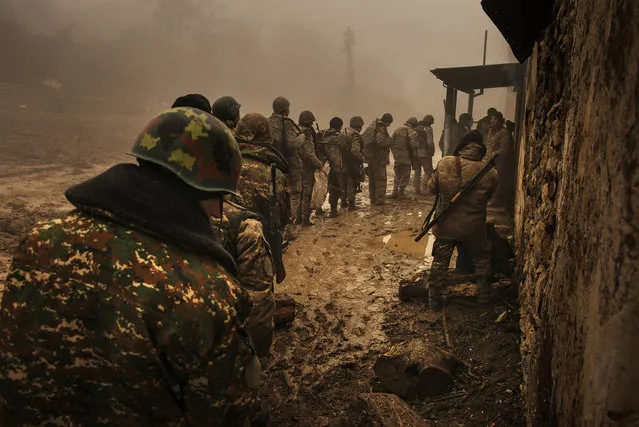
“Armenians – Endangered People”. “I was born in France, but 30 years ago, in a quest for enlightenment, I embarked on a venture to produce a visual rendition of the stories handed down by my grandparents who had escaped the 1915 genocide of the Armenian people”. After a ceasefire, Armenian forces withdraw from their positions. Under the agreement, Russian peacekeeping forces will be deployed for five years, Martuni Province, Nagorno-Karabakh. (Photo by Antoine Agoudjian for Le Figaro Magazine/Visa pour l'Image)
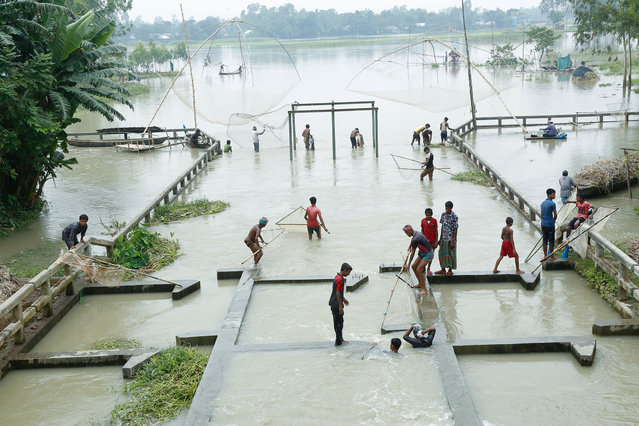
“Climate Migrants in Bangladesh”. Nature has never made it easy to live in Bangladesh, situated in the Ganges Delta formed by the confluence of the Ganges, Brahmaputra and Meghna rivers. Most of the country of nearly 150 million inhabitants is less than 10 metres above sea level; it is swamped by annual floods, and battered by cyclones and tornadoes, while the interior can be subject to drought.Villagers fishing in a canal after most of the ponds were submerged in floodwaters, Sariakandi, Bogra District. (Photo by Abir Abdullah/Visa pour l'Image)
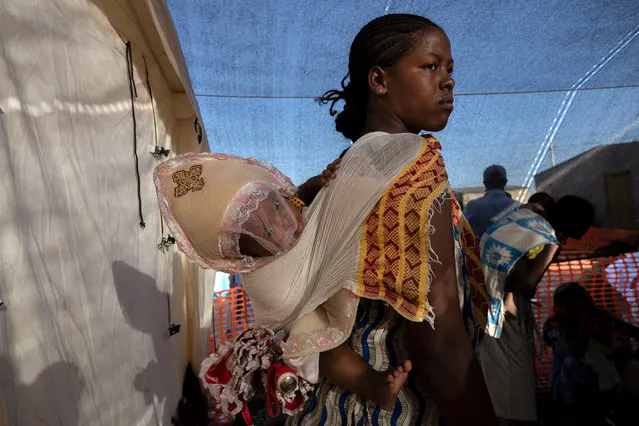
“Tigray: Fleeing War”. More than 62,000 refugees from Ethiopia’s embattled region are in Sudan fleeing the conflict. Many arrive at camps, malnourished, to wait for food, word from loved ones, water. It is not known how many thousands have been killed since fighting began on November 2020. The UN noted reports of rape as a weapon of war, artillery strikes on populated areas, burnt crops, civilians being targeted and widespread looting.A refugee waits for treatment at a clinic near Lugdi border crossing, eastern Sudan, December, 2020. (Photo by Nariman El-Mofty/Visa pour l'Image)
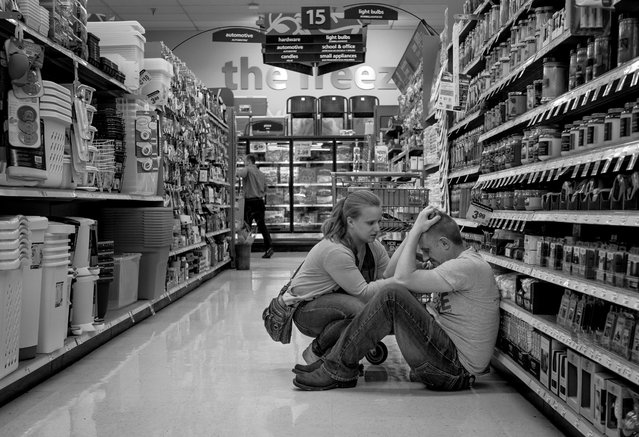
“Military Sexual Trauma in the US”. Rachel Lloyd comforting husband Paul who has had a flashback. While looking for light bulbs in the supermarket near his home, he stopped to smell a scented candle. Suddenly he sank to the floor, hiding his face and sobbing. The candle had the same fragrance as the shampoo he had been using in the shower at army basic training in 2007, when he was attacked and raped by another recruit. (Photo by Mary F. Calvert/Visa pour l'Image)
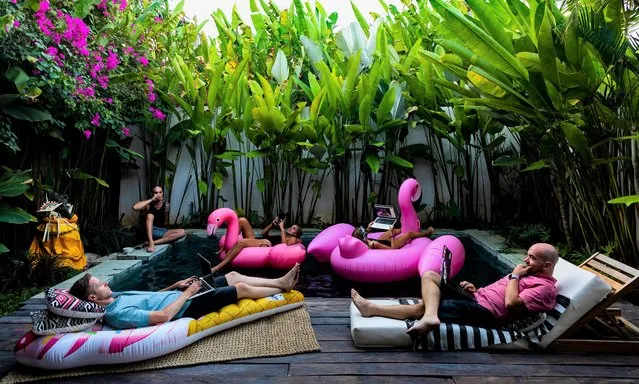
“Telework: Connected Work for Disconnected People”. Nina 31, lounging on the inflatable flamingo, conducting a work session with friends in a house in Bali. (Photo by Jerome Gence/Visa pour l'Image)
04 Sep 2021 09:02:00,
post received
0 comments
